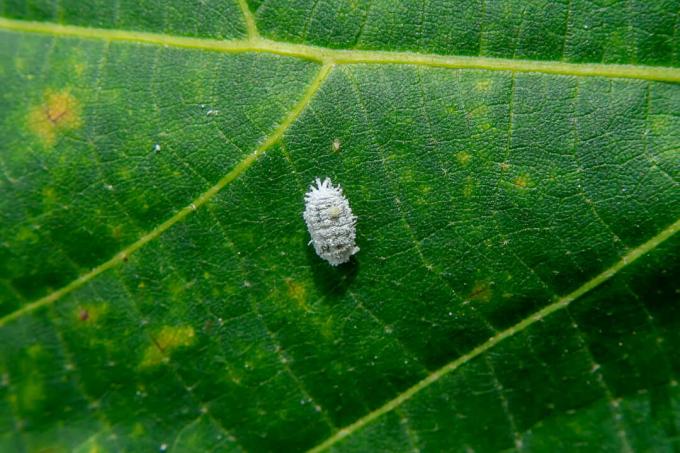The small white lice are often found on hydrangeas in particular. We show how to fight mealybugs on hydrangeas and avoid an infestation.

Mealybug (pseudococcidae) are also often called mealybugs and particularly like to sit on our hydrangeas. However, many other houseplants, ornamental plants, and even vegetable crops are also repeatedly infested with these hairy white lice.
We are happy when the colorful blossoms of the hydrangeas (Hydrangea) shine in our garden. However, our joy is soon spoiled when mealybugs attack our hydrangeas. Below you will find the most important information about hydrangeas and a mealybug infestation.
Recognize mealybugs on hydrangeas: symptoms and damage
Mealybugs are very easy to spot because they are surrounded by a white web that resembles tiny white hairs or white fluff. Mealybugs have an oval body shape and can grow up to seven millimeters in size. The white fluff is webs and scales made of wax that protect mealybugs. Some mealybugs also look like they've been dusted with powdered sugar.
Mealybugs attach themselves to the plants and then absorb the plant sap, even transferring harmful viruses to the plants. They also excrete the sticky honeydew on which fungi often grow. Therefore, it is not uncommon for sticky spots to be discovered on the plants, which often turn dark or black due to the fungi. As the lice suck on the hydrangeas, the infested leaves turn yellow and eventually fall off. If the infestation with mealybugs is very severe, the hydrangeas can even die.

Prevent mealybugs on hydrangeas
Mealybug infestation often starts suddenly when new plants are brought into the house. So if you get a new hydrangea for your living room, for example, check these plants immediately for pest infestation. If you spot signs of mealybugs - like the white dusty lice or sticky honeydew - then don't bring the plant near other houseplants. It is best to examine the houseplants thoroughly when you buy them, so that no pests come into the house. Indoors, poorly ventilated rooms and long periods of heat are often very conducive to an infestation of mealybugs. Therefore, make sure that there is good ventilation and that the temperatures in the rooms are not too high.
Fighting Mealybugs on Hydrangeas: How to Get Rid of Them
Mealybugs are natural enemies lacewings (Chrysopidae), ladybug (Coccinellidae) and parasitic wasps (Ichneumonidae). You can either acquire these from breeding or you can make your garden a beneficial creature-friendly place. You should create dry stone walls, beneficial insect hotels or small biotopes to offer the little helpers a nice living space. Here's more information on how to set up your Make the garden useful be able.
Apart from that, you can also buy ready-made preparations such as our Plantura Buy Organic Pest Free Neem. With its 100% herbal active ingredient, it works reliably against mealybugs and co.
Getting rid of mealybugs is often difficult because they are well protected by their waxy layer on their bodies, making it difficult to get rid of them. One way is to destroy this layer of wax with a mixture of spirits and water and use it to fight the mealybugs. In the case of a point-like infestation, you can also cut back the affected areas of your hydrangeas to prevent the spread of mealybugs. If potted hydrangeas are infested with mealybugs, isolate these plants from other ornamental plants to prevent spread. More to Control of mealybugs Find out here in our article with information about the small pests.



